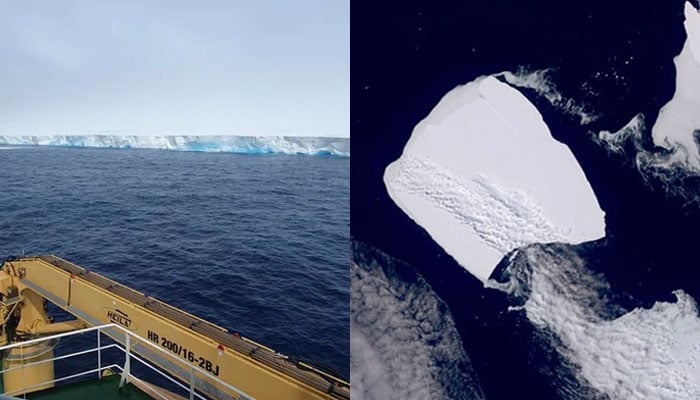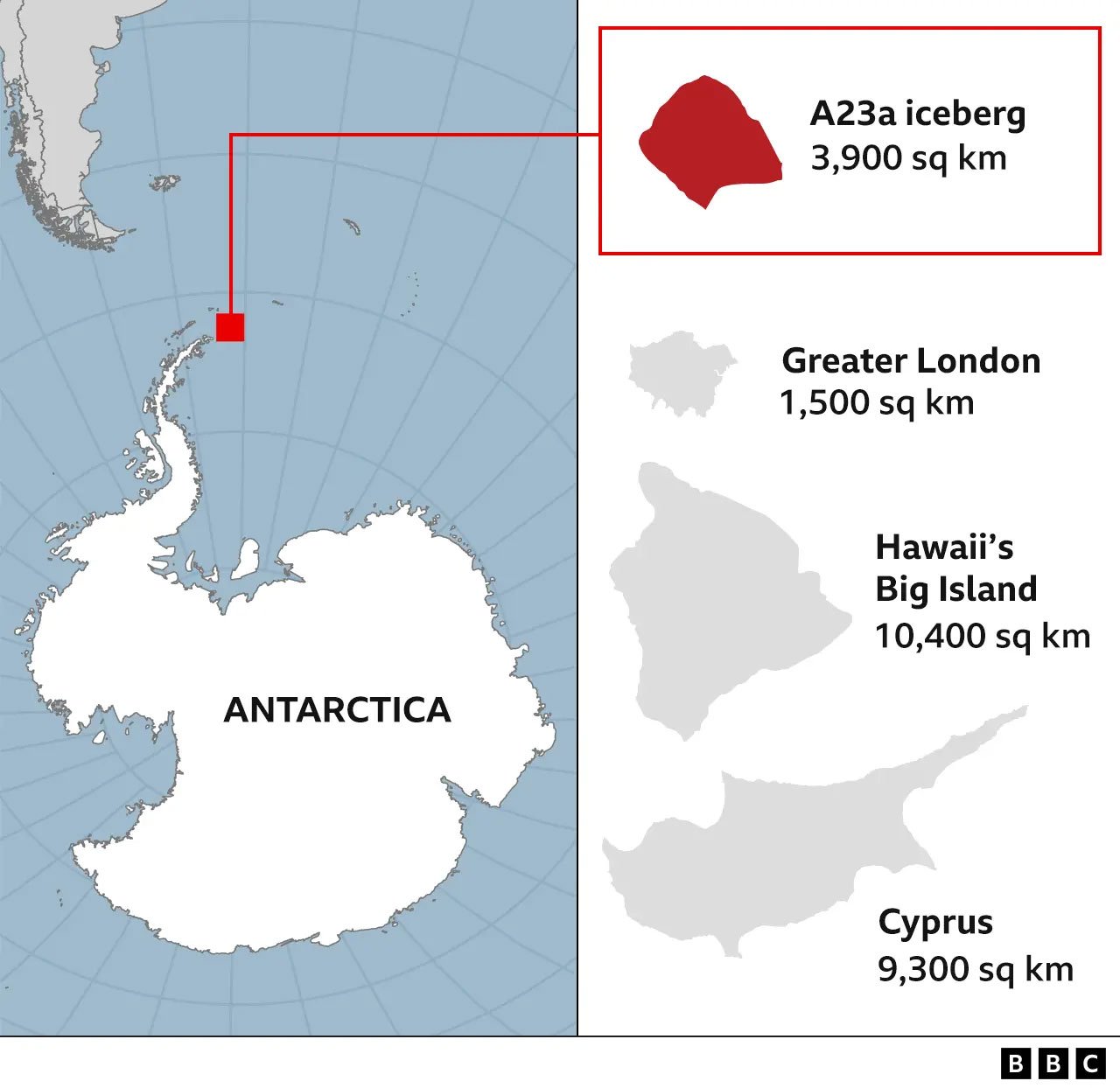A23a: World's largest iceberg nears trillion-ton mark, with over 280-metre thickness
Over the past decade, researchers observed a gradual decrease in A23a's thickness
December 14, 2023

The colossal A23a iceberg, recognised as the largest globally, is now quantified with precise figures, revealing its average thickness of over 280 metres and a total mass approaching a trillion tonnes.
According to BBC, Calved from the Antarctic coast in 1986, A23a's critical juncture in its journey is imminent, influencing its trajectory through the Southern Ocean in the coming weeks.
Satellite data from the European Space Agency's CryoSat-2 mission provided insights into A23a's complex structure, indicating a non-uniform block with some sections thicker than others.

Particularly noteworthy is a segment with a deep keel, reaching a draft of nearly 350 metres in 2018, anchoring the iceberg for more than three decades.
Satellite images reveal crevasses directly above this keel, suggesting damage caused when A23a hit the seabed during its initial grounding.
Over the past decade, researchers observed a gradual decrease in thickness, averaging 2.5 metres per year, a consequence of exposure to warmer waters in the Weddell Sea.
Now reaching the tip of the Antarctic Peninsula, A23a faces a critical phase as it encounters various ocean currents converging around the continent.

The iceberg's interaction with these currents, coupled with prevailing westerly winds, will determine its future trajectory. Scientists anticipate A23a to follow "iceberg alley," directing it towards the British overseas territory of South Georgia.
This course raises concerns about its environmental impact, as colossal icebergs play a vital role in ocean dynamics.
Bergs of this magnitude induce deep mixing of seawater, fostering nutrient transport to the surface and contributing to phytoplankton blooms.
Additionally, they release significant amounts of dust, enriching the surrounding ocean ecosystem. The unveiled measurements and environmental implications underscore A23a's profound influence on the delicate balance of the Southern Ocean ecosystem, prompting continued monitoring and research by scientists.









